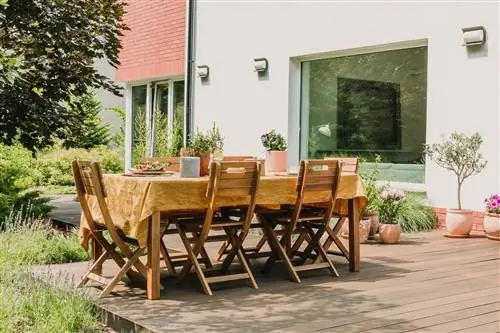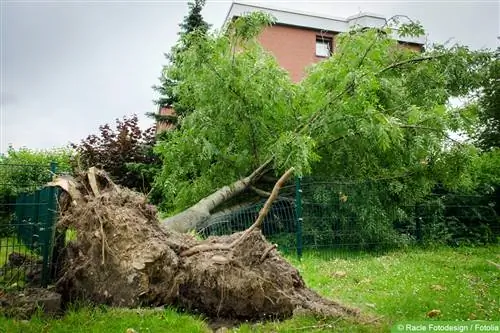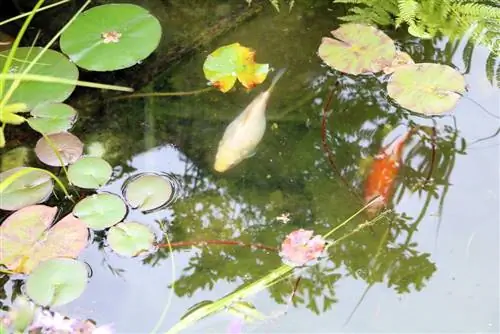- Author admin [email protected].
- Public 2023-12-17 03:39.
- Last modified 2025-06-01 06:48.
Whether and to what extent the terrace is part of the living space plays a crucial role in many respects. It is particularly important for tenants to know the basics of the calculation and to be able to check them if necessary.
Legal basis
Terraces have generally only been allowed to be counted as living space proportionately in rental agreements since 2004. The basic principle for orientation is 25 percent. This average is stipulated in the Living Space Ordinance - WoFIV for short. The regulation is considered particularly tenant-friendly.
However, DIN 277 (in which terraces are considered 100 percent living space) and the now outdated requirements of DIN 283 (here the terrace does not count as living space at all) can also be used as a basis for calculation.
Note:
For rental agreements concluded before 2004 - provided there have been no structural changes since then - the II. Calculation Ordinance (II. BV) applies, according to which the terrace counts up to 50 percent of the living space.
Overview
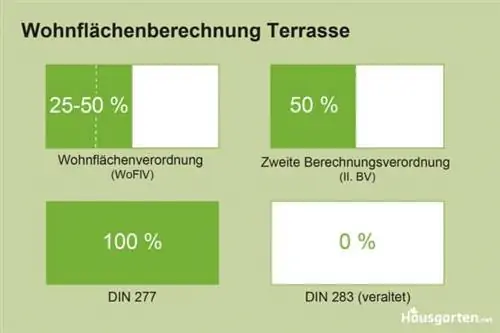
In the following overview we have put together all the important information for you about the extent to which the terrace is part of the living space:
- Living space regulations (since 2004): 25 to 50%
- II. Calculation regulation (until 2003, old rental agreements): 50%
- DIN 277: 100%
- DIN 283 (now obsolete): 0%
Basic calculation
According to WoFIV, the calculation of the living space of a ten square meter terrace with the average of 25 percent is as follows:
10 square meters: 4=2.5 square meters
The terrace is thereforecounted as 2.5 square meters of the living space.
However, this is only the case if the outdoor area meets the appropriate basics. These are:
- Construction requirements sufficient
- directly connected to a living room
- provided with a solid base
- safe to use
- suitable for setting up tables and chairs
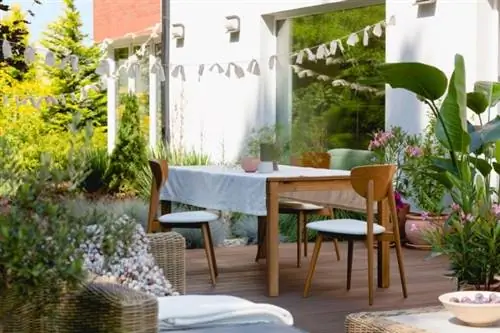
An increased credit is possible, as is a reduced percentage of the living space. It is definitely worth taking a look at the rental agreement in order to get a fair price. This is especially true when there is limited or no use at all. Especially with larger terraces and an increased percentage, the calculation has a direct and significant impact on rent and additional costs. If necessary, a rent reduction must be made.
Tip:
Direct advice from the Tenant Protection Association or from a lawyer who specializes in tenancy law is always recommended before making a corresponding claim to the landlord.
Increased credit
An increased calculation of the terrace as living space is then possible,if special requirements are met. These can be, for example, the following points:
- special view in a sought-after location
- particularly high quality of equipment
- side boundaries
- Roofing
- further modernization measures
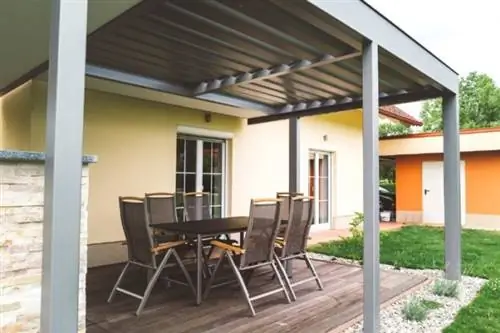
If the terrace is suitable for longer use, has just been newly built or offers other amenities, it canbe counted as living space for up to 50 percent.
In the example above with a ten square meter terrace, the calculation looks like this:
10 square meters: 2=5 square meters
In this case, the terrace countswith five square meters of living space.
Reduced credit
Just like the increase, a reduced credit can also be made,if the terrace can only be used to a limited extent. Possible factors for the reduced credit are:
- Age
- structural defects
- lack of equipment
- Damage
- bad location
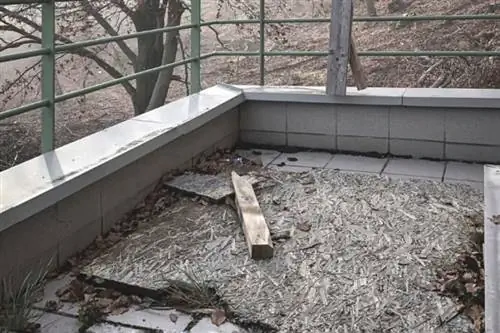
The calculation must then bebelow 25 percent and in our calculation example may therefore amount to a maximum of 2.4 square meters with a floor area of ten square meters.
Note:
If the terrace is not suitable for use at all, for example because it can be proven that doing so exposes oneself to danger or the area is unpaved, it may not be counted towards the living space at all. In this case, the area does not count as a terrace in the legal sense and therefore not as living space.
Frequently asked questions
Do roof terraces count as living space?
There are no legal differences between terraces and roof terraces. For very large systems, the rental agreement should therefore pay close attention to the percentage and the condition of the terrace.
When is a cost increase for terraces permitted?
A terrace can be counted as living space at a higher percentage if the equipment and thus the use is improved accordingly. This can include, for example, renewing the floor, installing side walls or railings and a roof. The appreciation can then legitimately be reflected in the price and lead to a rent increase.
How do I know that a terrace is usable?
The terrace must be suitable for walking and sitting on safely. If these options are not available because the floor is not sufficiently secured or there are structural defects, the rent may be reduced in the amount of the terrace counted as living space. Depending on the size, this can make a significant difference. So it's worth doing the math.

